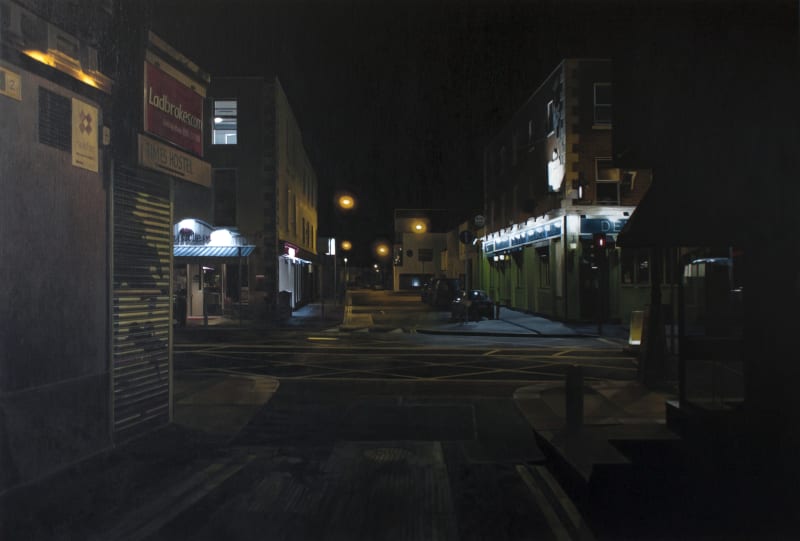The paintings of Francis Matthews are informed by light, architecture and the phenomenology of place. The scenes he creates are almost always absent of people, describing places of neglect or moments of silence in otherwise inhabited locations. In a way, the viewer is cast as the inhabitant of the scene, a feeling achieved through the careful organisation of viewpoint and framing.
Matthews had his debut solo exhibition at the The Molesworth Gallery in November, 2016, consisting of a series of 12 nocturnes plotting a route from Heytesbury St to Harcourt St in Dublin. Writing about the exhibition, Hugh Campbell, Professor of Architecture at UCD, said of the artist’s work that he “has made the emptied nocturnal city his own. He has identified the particular quality that urban spaces hold once the bustle of nightlife finally subsides and before morning brings a quickening into life again. In this state of stilled suspension, Dublin’s streets and spaces seem both weary and expectant. Things have happened, there is more to come, but for now, we pause. Matthews makes this particular atmosphere vividly available. Unlike Edward Hopper’s nocturnal paintings, with which they bear some affinities, his views are uninhabited. Instead the viewer is cast as the inhabitant of the scene, a feeling achieved through the careful organisation of viewpoint and framing. The resulting, slightly forced perspective often presses foreground close, so that the lit surface of a front door or a car window looms towards us while the street itself tails off into blackness.
“The paintings are characterised by a re-balancing of elements and of hierarchies. The textures of a road surface are more prominent than the details of the buildings. Illuminated signs and road-markings jump forward even as the surfaces supporting them recede in the dark. These re-calibrations might be viewed as a conscious attempt by Matthews to make evident to us how the nocturnal view is apprehended, but they are just as much the natural consequence of his method. As he builds from a black painted canvas to light, fragmentary elements flare out of the darkness – sometimes as concentrated bursts, sometimes as more extended spills, washes and patterns. The scene is painted in a manner analogous to how we experience it, with darkness the unifying medium and brightness a constructed condition.”
Francis Matthews graduated with a first-class honours degree in architecture from UCD before pursuing a career as an artist. He has won multiple awards at the RHA Annual, including the Hennessy Craig Scholarship.
